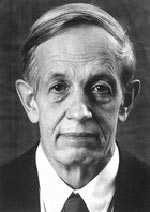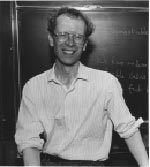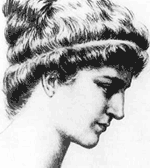
e-mail us: jack@starlab.net
At Starlab, between the equations we use English. Here we celebrate the stories of some great mathematicians.
John Forbes Nash Jr., b. 1928, West Virginia
They thought he was a tramp. Then he won the Nobel Prize John Nash had been doing significant, profound mathematical work of genius until he turned thirty. Then he ‘changed’. Diagnosed as ‘schizophrenic’ in 1958, he spent the next 3 decades in intermittent anguish, living with his ex-wife but seemed to be a vagrant, mainly haunting Princeton’s halls. His mental ‘clouds only began lifting in the 1980’s Suddenly in 1994 he was awarded the Nobel Prize – for Economics. (There is no Maths Prize) The Prize was for his work on game theory – especially the thesis which had gained him his doctorate on his 22nd birthday, 45 years earlier. He’s now listed as a researcher at Princeton, in Mathematical Economics. Mathematicians continue to hail John Forbes Nash Jr. as one of the greatest of their number.His story is told by Sylvia Nasar in ‘A Beautiful Mind’ (Simon and Shuster)
Maths is a haven for eccentrics
There was, reportedly, a brilliant mathematician who would only make love with his wife on prime-numbered days (It was pretty good early in the month apparently – 2, 3, 5, 7, but it got tougher towards the end, with a big gap until 29). And Andrew Wiles of Cambridge – now at Princeton – was certainly thought to be eccentric to dedicate seven years of his life to the solving of a single, seemingly jokey problem, posed centuries ago by the mathematician and physicist Fermat. The story of Wiles’ brave journey is of course, told in the best-selling book ‘Fermat’s Last Theorem’ But one of the great, true eccentrics of all time was Paul Erdos. He deserves a section on his own.
If there is a Paul Erdos story, it certainly doesn’t follow a traditional narrative line, except that he was born in Budapest and did maths all his life, from the first signs of his genius when he was 3. For the last 25 of his 83 years he worked 19 hours a day. ‘A mathematician,’ he said, ‘is a machine for turning coffee into maths.’ He was the most prolific mathematician of all time, and addressed more mathematical problems than anyone in history. He co-wrote 1,475 papers - all of them substantial, many of them monumental. If you had written a paper with him, your Erdos number became 1. If you had written a paper with someone with Erdos number 1 your Erdos number became 2 and so on. He developed a quaint language. In Erdosese, children were ‘epsilons’ – tiny units; married equalled ‘captured’ – a fate he himself avoided; ‘trivial beings’ were non-mathematicians. God was the ‘Supreme Fascist’. The Supreme Fascist has a ‘Great Book’ into which sometimes mathematicians were permitted a glimpse. He wished his epitaph to be, ‘Finally, I am becoming stupider no more’. His story is told in The Man Who Loved Only Numbers by Paul Hoffman
Born about 370 A.D, Died March 415 Hypatia’s story is popular among feminists, for obvious reasons. She was the first woman to make a contribution to the study of mathematics. She was also a Platonic philosopher and astronomer. She was the daughter of the mathematician and thinker Theon, and she undoubtedly assisted him, but, although it would be gratifying to know of her doing original research, there are actually no signs of her having done such work. She is described as an excellent editor and preserver of earlier studies. According to Socrates Scholasticus, though, she did make ‘such attainments in literature and in science as to far surpass all the philosophers of her own time.’ Hypatia was murdered by Christians in March 415. She was stripped, carved with sharp tiles, torn to pieces and burned. She was a pagan. She also was threatening because of her learning, scholarship and depth of scientific knowledge. Hypatia’s story is also told in the Byzantine encyclopaedia The Suda, as well as by John Bishop of Nikiu, and elsewhere.
It is said that the world is divided into two types of people: those who divide the world into two types of people and those who don’t. It is clear, though, that the idea of mathematics sets people apart. It is Starlab’s aim in promoting the Public Understanding of Science to welcome the world’s fraction-phobics.
e-mail us: jack@starlab.net



